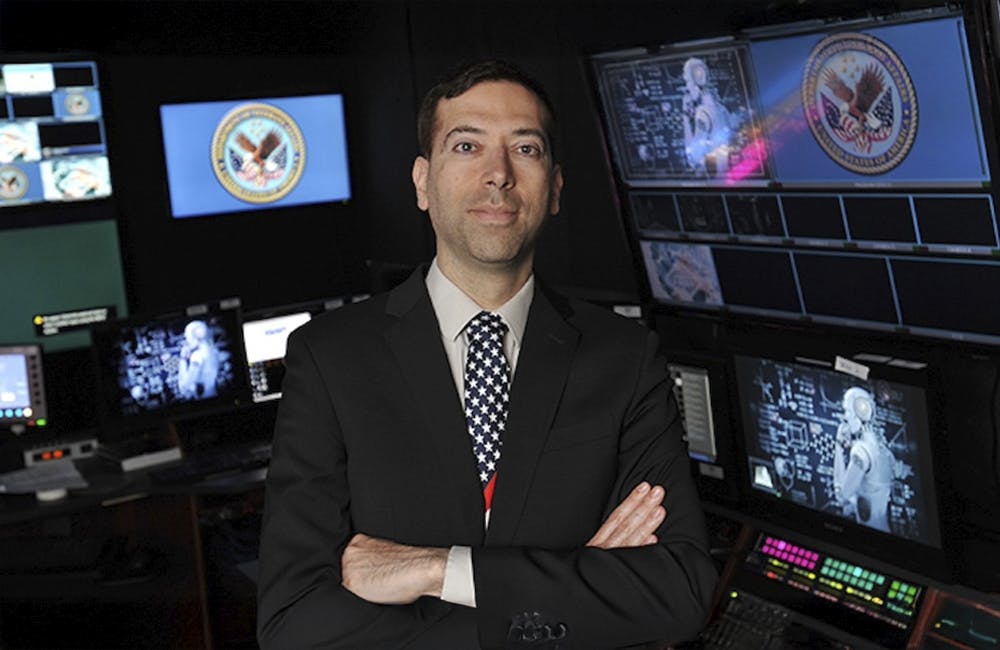Energy Leaders Eye Next Phase of AI
Leaders from DOE see AI accelerating operations and improving partnerships.

The Department of Energy sees artificial intelligence as a key enabler to the future of its mission as it anticipates release of its second playbook soon.
The October White House executive order on AI laid out guidelines on how agencies should approach the emerging technology, including DOE. The order tasked the agency with developing standards to “address AI systems’ threats to critical infrastructure, as well as chemical, biological, radiological, nuclear, and cybersecurity risks.”
Brian Epley, principal deputy chief information officer at the Department of Energy, told an audience last week at the GovAI Summit in Arlington, Virginia, that the department is leading the way for agencies when it comes to integrating AI into their department’s operations.
Epley said the department has been using AI for over a decade in science, research, and national security. Energy, he added, has been using the emerging tech in high performance computing for COVID-19 research and supporting the Coast Guard’s data analysis during the Maui wildfires.
Epley cited partnerships with other federal agencies like the departments of Veterans Affairs and Health and Human Services as well as commercial and international partners as important in building fast in AI and sticking to the agency’s mission.
“Our mission is measuring climate change, climate, resilience, clean energy, those evolutions. AI is at the forefront of what we’re doing there. We’re looking at scientific discovery and how to use this technology to accelerate that,” Epley said. “We’re moving from legacy technology. … It’s not just about where we’re at today or what the next version of releases, it’s what we’re going to do together and that collaborative partnership.”
Gardy Rosius, associate deputy CIO of architecture, engineering, technology, and innovation at the agency, pointed to the department’s own playbook of AI guidelines, which already developed a version one. A second updated version is on the way that will incorporate some of the ideas laid out in the executive order.
“Some people ask the question, ‘is AI our friend or is AI our enemy?’ My answer to that is, I think AI is our friend but just like a good relationship, there are boundaries. We’re trying to set the boundaries and helping the department to move forward with adoption in a way that we think is consistent with not only our mission, but also with the risks that may be involved,” Rosius said last week.
Rosius also said Energy created AI hubs to improve subject matter expertise and “discovery zones” for the agency’s partners and developers to experiment with the technology in a safe testing He also mentioned that the agency developed a “tiger team” to examine biases and AI and help the department avoid mistakes in adopting the technology that have been made in the past.
This is a carousel with manually rotating slides. Use Next and Previous buttons to navigate or jump to a slide with the slide dots
-

Trump’s Executive Order Spurs Federal Push for AI Literacy
Agencies are ramping up AI literacy efforts across the federal workforce and education systems after Trump's executive order on AI education.
5m read -

AWS Summit: A DOE National Lab Uses GenAI to Boost Efficiency
Lawrence Livermore National Lab launches a new generative AI tool to drive operational efficiency at the National Ignition Facility.
9m listen -

VHA’s AI Chief Led NIH’s New AI RFI
The agency's AI chief Gil Alterovitz helped develop a plan that hints at how NIH is charting the future of AI and biomedical research.
5m read -

DOE National Labs Launch New AI Tools for Operational Efficiency
The Energy Department's National Laboratories are using AI to increase operational efficiency and drive research efforts forward.
3m read








